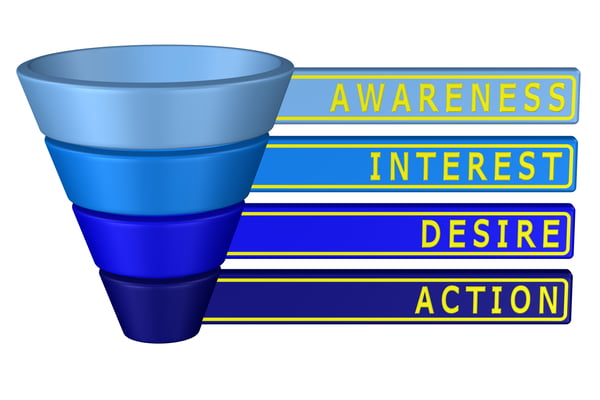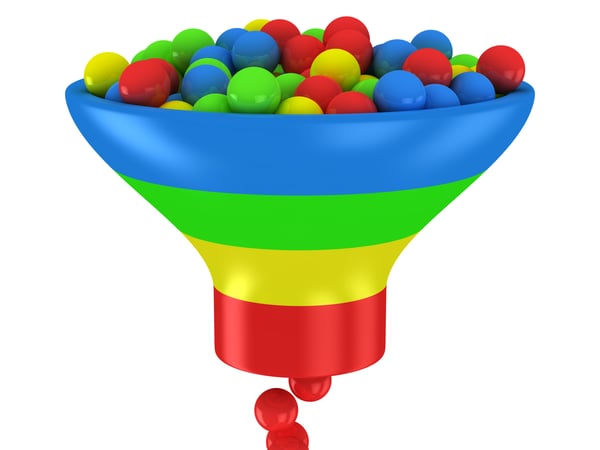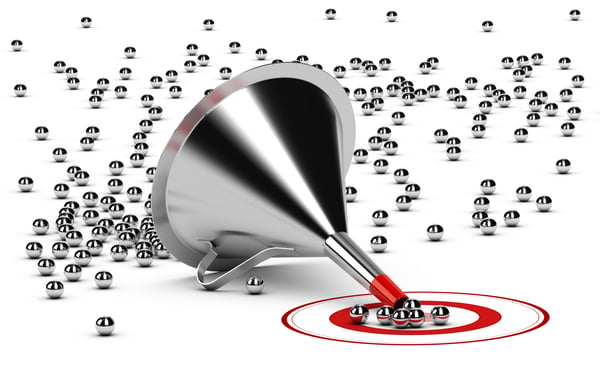The Right Way To Run a Marketing Campaign
Want to know how to track and ensure your next marketing campaign is successful? Then you need to know about sales funnels and how your jewelry store can use them correctly to increase sales.
Today we’ll show you what a sales funnel is and a pre-internet example to show how this principle has always worked. We broke this blog up into two parts. Part one will focus on the basics of funnels. In part two we’ll look at how the internet has shaped the way sales funnels work and how you can use digital sales funnels in your store.
What is a Sales Funnel?
A sales funnel is the customer’s journey from the time they become aware of you to when they buy your jewelry.
Sales funnels have multiple stages that filter out unqualified or uninterested prospects while attracting the right customers. Each step also encourages prospects to like, trust, and, eventually, buy from you.
You need to track the results of every step in your funnel. This is extremely important, and unfortunately, a lot of jewelry stores fail to do this. Tracking allows us to see what's working and areas of the funnel that need improvement. Some funnels are easier to track because they are for a list of existing customers. Each person is accounted for as they drop off or move further down the funnel.
AIDA is Here to Help
The sales funnel we use today was created over 100 years ago. The model uses the acronym AIDA. A funnel has many stages a buyer goes through. Here are the four stages in our AIDA model:
Attention- This is where you want people to start recognizing your jewelry store and what you offer. You are not selling anything at this stage.
Interest- The target is interested in you, your store, or the jewelry you are offering. The key at this stage is to keep their interest and move them to the next stage.
Desire- This is when the customer wants to make the purchase and has to have that beautiful ring or bracelet. Salesmanship or a small promotion might nudge the target to the final stage.
Action- You target has acted and is now a customer.
When was the last time you made a big purchase? Do you remember going through the stages above? Chances are you experience the AIDA model as well.
 Classic Real World Example
Classic Real World Example
Here is an example of a sales funnel that existed before the internet and could still work today. Feel free to try it out yourself.
Jim from ABC Diamond sends out a letter to 1,000 residents in the area. In the letter, he introduces himself as the neighborhood jeweler and offers free cleaning and a 1-year maintenance package to the first 100 people who call in and schedule their cleaning. When they come in for their cleaning they are given a $50 gift certificate good for a future jewelry purchase. The certificate must be used within 60 days. Jim calls the prospect in a few weeks to say hello and remind them their certificate will expire soon. The prospect comes in and redeems the certificate.
Let’s take a look at each step in this funnel.
Step 1 Letter
Jim purchased a list of 1,000 resident’s names and addresses. Jim wants to make them aware of his store and offers them a free service. He builds urgency by offering this to only the first 100 people. When they schedule their free cleaning, Jim collects their phone number and all contact information.
Step 2 In-store Visit/Cleaning
During the cleaning, Jim gauges the person’s interest in new designs or jewelry in general. If the person showed interest in an item they are offered a $50 gift certificate for their first purchase. If Jim feels they are not going to purchase in the future he doesn’t offer the certificate. In this case, Jim himself is filtering out unqualified prospects.
Step 3 Jim’s Phone Call
Jim calls those he gave gift certificates to. The call is to follow-up on the cleaning and provide maintenance tips. He reminds them of the $50 certificate and how they could use on that piece of jewelry they were looking at. He ends the call by reminding them the certificate will expiration date and how he’ll call back to schedule the next complimentary cleaning.
Step 4 Purchase
Jim’s phone call, and getting closer to the $50 certificate expiring, will make some prospects in the funnel come in and make a purchase. Most won’t, and that’s ok.
Multiple Stage are Key
The key to a funnel is to warm up your prospect and help them get to know your brand. This is relationship building and you're looking for lifelong customers who will tell their friends about your store.
Most jewelry marketing campaign follows a “go for the sale” mentality and are not patient enough to build trust with the prospect. Can you see the AIDA model in the example above? Good campaigns are structured to have multiple touch points with customers to build trust.
Planning Steps
Set a goal- This is when Customer Lifetime Value comes in handy. You’ll want to calculate how many customers you’ll need to reach your revenue goals. They don’t necessarily have to be financial. For example, your goal can also be to grow your list of contacts.
Budget- How much you’re going to spend on this campaign. Factor in the time and costs to run events, printing, postage, etc. Does it make financial sense to run this campaign?
Get team onboard- Your sales team needs to be fired up about your new campaign. You can also incorporate a contest to motivate them.
Set dates- If you’re going to hit your goal you need a finish line. Each campaign should have a beginning and end date.
Know Your Potential Customers
Understanding the people you want going through your funnel will make creating the funnel fun and easy. If you know what they are looking for you’ll know what message to put in front of them and what the next steps should be. Every campaign can be very unique, so don’t be afraid to get creative.
In our real world example Jim sent 1,000 letters to random neighbors. A big chunk of those 1,000 had no interest in getting their jewelry cleaned. Some may not even own jewelry.
Let’s say Jim had a list of 1,000 newlyweds who recently moved into the area. We know that they most likely have a piece of jewelry that needs to be cleaned and maintained. They are new to town, so they probably need a new local jeweler they can trust.
If we run each list through Jim’s sales funnel example which do you think will work best for? I think Jim would much rather use the second list.
If you know the people you are targeting and put the right message in front of them, then it becomes a lot easier to earn their attention and interest.
Final Thought
Sales funnels have been around for over 100 years and they’ll be around for a long time. When done correctly a sales funnels can not only lead to more sales but can also strengthen the relationship with customers by building trust. A good campaign has multiple stages and understands the people that are going through the funnel.
Next week we’ll look at how digital marketing has made targeting and tracking much easier. We will also show you how you can start your next successful funnel.
If you’d like to get started today, contact GemFind’s experienced team of marketing professionals today.
Contact us today to get started. 800-373-4373


